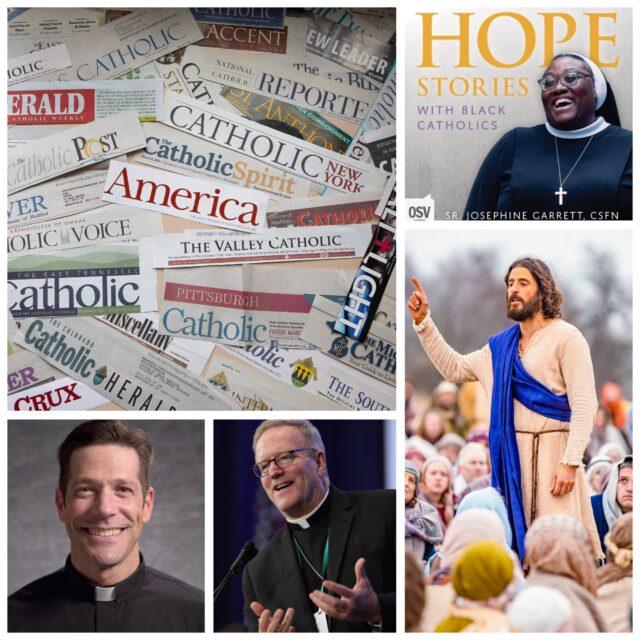
The good news today is that Catholics are still reading, listening and watching Catholic materials. The better news is that the numbers who are reading, listening and watching have been going up.
The bad news, of course, is that it isn’t everybody.
Catholic statistics of all sorts have been trending downward for years, highlighting a frustrating decline in sacramental practice and attendance. Only 21 percent of Catholics are attending Mass weekly or more. In fact, 53 percent of self-identified Catholics go to Mass only a few times a year or not at all.
Yet a new survey by the premier Catholic research institution known familiarly as CARA (the Center for Applied Research in the Apostolate) shows that Catholics are accessing Catholic materials at a significantly higher rate than when the survey was last taken in 2011.
Here is some of what the CARA survey is telling us:
- Watching religious or spiritual video content nearly doubled from 24 percent in 2011 to 45 percent in 2023. (Thank you, “Chosen.”)
- Listening to religious or spiritual audio content more than doubled from 13 percent to 29 percent. (Thank you, Bishop Robert Barron and Father Mike Schmitz.)
- Reading a print or e-version of a religious or spiritual book also jumped, as did the purchasing of these materials. (Thank you, Catholic publishers, for hanging in there!)
When it comes to newspapers, the numbers are also heartening. The reading of print copies of magazines or newspapers has stayed flat at 18 percent, but reading a newspaper or magazine online jumped from 3 percent to 13 percent. A total of 21 percent get information about the church from print or online newspapers. Only parish bulletins or word of mouth rank higher.
For all the chancery naysayers who repeat the cliché that print is dead and urge the killing of the newspaper or magazine to save money, the survey may be a disappointment. But for church leaders committed to keeping Catholics both inspired and informed, it is validation that a both/and approach to communications remains the recipe: Print plus online plus social media.
The survey also underscores a fact often missing when talking about the cost of a diocesan publication. The most faithful and dedicated Catholics read and rely on them.
CARA found that 62 percent of weekly Mass attenders believe the print version of their diocesan newspaper or magazine is an essential part of how the diocese communicates. Sixty percent of monthly Mass attenders responded similarly. And “54 percent of weekly attenders agree that they would be upset by any suggestion that their diocese stop producing a print version of its publication. Fifty-three percent of monthly attenders responded as such,” the report said.
Only 55 percent of Catholics regularly contribute to the parish offertory collection. While CARA did not specifically ask this question, my guess is that the largest percentage of those donors would be those weekly attendees and media readers.
The survey recognizes that there are a wide range of Catholic communication efforts, from websites, social media and blogs, to television, radio, video, print and online. The number of Catholics actively practicing their faith may be in slow decline, but those who are committed are relying now more than ever on Catholic media.
The takeaways are this: church leaders should want to be in the game, not standing on the sidelines while others control the messaging. And they should also want to be committed to providing resources of high quality because it maintains their connection with their most committed parishioners. This isn’t their only audience, and newspapers and magazines are not their only tools, but they remain essential in a world where secular mass communications are becoming more sophisticated and, too often, more manipulative.
When weighing the cost of their media efforts, dioceses should make sure the mission value of these investments makes it into their spreadsheets as well.
Greg Erlandson is an award-winning Catholic publisher, editor and journalist whose column appears monthly at OSV News. Follow him on Twitter @GregErlandson.







